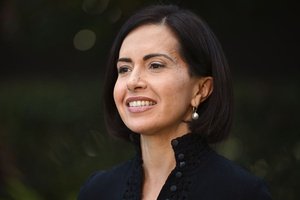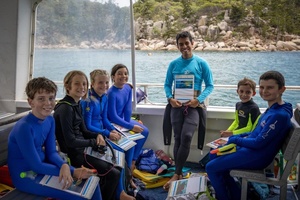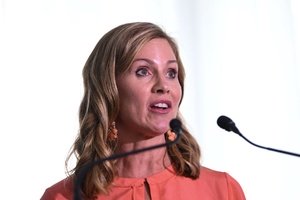Around one in eight children worldwide (approximately 302 million children) have been victims of non-consensual taking, sharing and exposure to sexual images and videos in the past year.
Further, one in eight children globally is estimated to have been subject in the past year to online solicitation, such as unwanted sexual talk, which can include non-consensual sexting, unwanted sexual questions and unwanted sexual act requests by adults or other youths.
Offences can also take the form of “sextortion”, where predators demand money from victims to keep images private to abuse AI deepfake technology.
The findings are published in a report today by the Childlight Global Child Safety Institute at the University of Edinburgh in partnership with UNSW Sydney, as part of the first global index of child sexual exploitation and abuse prevalence across three indicators: victimisation, perpetration, and availability of child sexual abuse material online.
The report draws upon data from over 36 million reports to the leading policing organisations, surveys, and analysis of 125 studies, including the work of criminologist Professor Michael Salter from the School of Social Sciences at UNSW Arts, Design & Architecture.
Salter, who is the inaugural director of the new Childlight East Asia and Pacific hub at UNSW, said the global index aims to provide a universal measure of child sexual abuse and exploitation.
“We’ve previously never had a globally agreed baseline for the measure of child sexual abuse and exploitation to understand the scale of the problem, track efforts to reduce it, and hold governments to account,” Salter said.
“By shining a light on the extent as well as the nature of child sexual exploitation and abuse, it is our hope that this research can be a catalyst for change to keep children safe.”
The global scale of child sexual abuse
Children are also being exploited and sexually abused across the world every second of every day.
The report found files containing sexual images of children are reported once every second to the five main watchdog and policing organisations in the world.
Professor Debi Fry, an expert in international child protection at the University of Edinburgh and lead of the Childlight project, said the world needs to know these atrocities are affecting children in every classroom, in every school, in every country.
“These aren’t harmless images: they are deeply damaging, and the abuse continues with every view and the failure of taking down this abusive content,” Fry said.
While problems exist in all parts of the world, the report found the United States was a particularly high-risk area, with high levels of child sexual abuse material hosted there.
It also found about a quarter of US children (23 per cent) reported being victims in the past year of non-consensual taking, sharing and unwanted exposure to sexual images and videos.
One in nine men in the United States (equating to almost 14 million men) admitted online sexual offending against children at some point in their lives.
A recent study led by Salter also estimated nearly one in ten Australian men have committed a sexual offence against a child.
“The higher rates of child sex offending in the United States are driven by policy decisions, including a lack of investment in public health and child welfare and a reluctance to regulate online environments,” Salter said.
“We’re talking about children who have been sexually abused because they are using technology, services and products that are promoted to them by commercial entities who facilitate this, and we need to focus our attention on the role they play in ensuring child safety online.”
A public health crisis
Grace Tame, Australian of the Year in 2021 and herself a survivor of childhood sexual abuse, said the figures in the report showed that child sexual abuse is a “global public health crisis that is steadily worsening”.
Salter said the problem has worsened since COVID 19 and should be treated as an epidemic.
“Child sexual abuse is a public health issue with long-term impacts on the mental and physical health of victims and survivors,” Salter said.
“There are significant safety implications for children who are abused online, particularly images and videos have been recorded have been distributed and framing it as an epidemic captures the sheer scale of its prevalence and devastating lifelong impacts.”
Childlight CEO Paul Stanfield said while his organisation is calling for child sexual abuse to be dealt with as a public health issue, he recognises this will take time – time that children don’t have.
“Police cannot deal with the scale of the problem, and more needs to be done to prevent it happening in the first place,” he said.
“Children’s safety needs to be put before the privacy of offenders and corporate profit.”
Stop It Now! Australia works with adults concerned about their own or someone else’s sexual thoughts or behaviours towards children. Call the anonymous helpline on 1800-01-1800 or access resources here.















